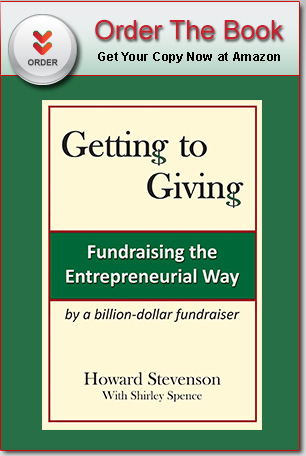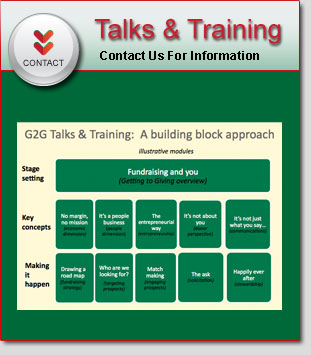I recently attended the board meeting of a community hospital that I admire for its good management and was embarking on a fundraising campaign. The Development Director presented a list of “identified areas for philanthropic support” intended for use with major donors, for discussion.
Let me start by saying that I like needs lists almost as much as recognition opportunity lists. (Yes, I am being facetious.) My basic objection is that they both tend to be institution-centric laundry lists.
But in reviewing the hospital’s list, it occurred to me that another problem is that needs lists – and fundraising communications in general – all too often fail to explain the why’s and the how’s, in terms that are meaningful to donors.
Take this sampling of items from the hospital’s list of philanthropic support needs:
- Hybrid operating suite – Surgical theater equipped with advanced, flexible technology to enable minimally-invasive surgery, facilitated through intra-operative 3D imaging.
- Pediatrics – Advanced neonatal care and elevation of nursery to II-B level to care for babies born prematurely, or with life threatening neonatal disease.
- Geriatrics – Support for the Quimby Center’s fellowship and House Calls program provides training for the next generation of geriatricians and better care for seniors.
- Healing garden – Plans are being made for the creation of a healing garden for patients and families.
My pen was itchy. This felt heavy on the how’s and light on the why’s. Here’s what happened when we took a quick stab at some edits aimed at building a stronger case for why this is important:
- Hybrid operating suite – To improve patient outcomes and decrease recovery time, we need to invest in a surgical theater equipped with advanced, flexible technology that will enable minimally-invasive surgery, facilitated through intra-operative 3D imaging
- Pediatrics – To better serve patients with more complicated pregnancies and births, we need funding for advanced neonatal care and elevation of nursery to II-B level to care for babies born prematurely, or with life threatening neonatal disease.
- Geriatrics – Geriatric care is a growing and critical need for our aging community. We seek support for the Quimby Center’s fellowship and House Calls program provides training for the next generation of geriatricians and better care for seniors.
- Healing garden – Experience shows that hospital healing gardens provide solace and relief from stress. Plans are being made for the creation of a healing garden for patients and families.
As a donor, I found the brief cases much more compelling. Knowing why each opportunity is important for achieving the hospital’s mission of providing compassionate, top notch care to local communities makes a difference. (Remember Question 1: “Are you doing important work?”!)
Some organizations err in the opposite direction: lofty or vague why’s and not a lot of how’s. Donors, especially significant donors, will want to know how their gift will make a difference. (That would be Question 3.)
For example, one ballet company’s “Donate” web page begins by noting that ticket sales account for just 40% of “all the great work you see at the City Ballet” and then goes on to list membership categories with benefits ranging from a monthly e-newsletter to special events, guest vouchers and opening night parties. I wondered, how would my money be used?
Another ballet company’s “Support” page was more forthcoming: “You have helped us to become one of America’s finest ballet companies and we thank you. Your gift will allow our artists, musicians, crew and staff to continue to offer diverse programming as well as in-depth education and outreach programs to our State’s students, teachers and special-needs individuals.”
It also offered targeted giving opportunities for such things as supporting an innovative production of the Nutcracker and contributing to a scholarship program for young dancers. Another nice touch was a “Request a donation” offer (on a first come, first served basis) of free tickets to qualifying nonprofits.
As a donor, I found the second company’s pitch much more tangible and motivating.



